Places to visit close by Cartagena de Indias:
Islas del Rosario
Castillo de San Felipe
Typs:
Don't take the boat tour to the Islas del Rosario, you will waste 5 hours in the boat and you will be in the beach only for 2 hours. Better go by bus. There is a bridge.
Cartagena de Indias, is a large Caribbean beach resort city on the northern coast of Colombia in the Caribbean Coast Region of and capital of Bolívar Department. The city had a population of 892,545 as of the 2005 census making it the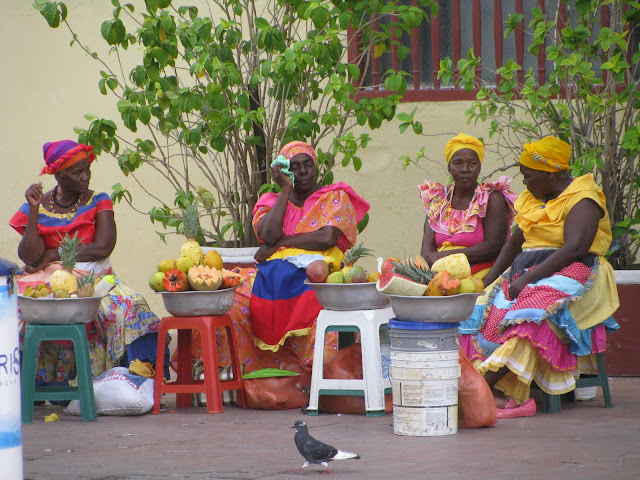 fifth-largest city in Colombia and giving the Cartagena urban area the status of fifth largest urban area in Colombia. Cartagena is a centre of economic activity in the Caribbean, as well a popular tourist destination.
fifth-largest city in Colombia and giving the Cartagena urban area the status of fifth largest urban area in Colombia. Cartagena is a centre of economic activity in the Caribbean, as well a popular tourist destination.
Activity and development of the Cartagena region is dated back to 4000 B.C. around Cartagena Bay. The city itself was founded June 1, 1533 and named after Cartagena, Spain. Cartagena served a key role in the development of the region during the Spanish eras and secured a hold as a center of political and economic activity due to the presence of royalty and wealthy viceroys. In 1984, Cartagena's colonial walled city and fortress were designated a UNESCO World Heritage Site.
The Puerto Hormiga Culture, found in the Caribbean coast region, particularly in the area from the Sinú River Delta to the Cartagena de Indias Bay, appears to be the first documented human community in what is now Colombia. Archaeologists estimate that around 7000 BC, the f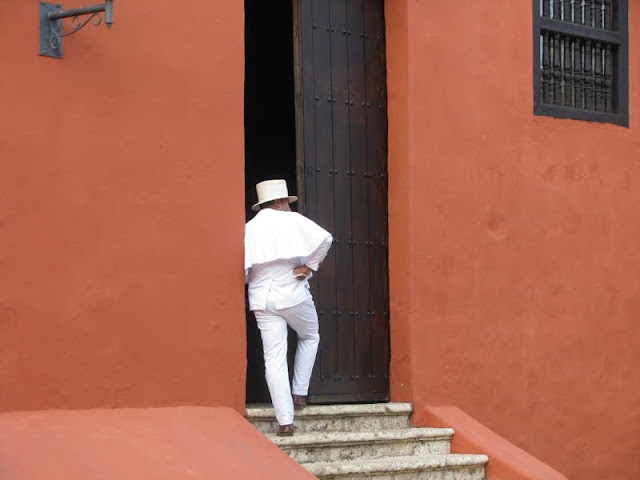 ormative culture was located near the boundary between the departments of Bolívar and Sucre. In this area archaeologists have found the most ancient ceramic objects of the Americas, dating from around 4000 BC. The primary reason for the proliferation of primitive societies in this area is thought to be the relative mildness of climate and the abundance of wildlife, which allowed the inhabitants, who were hunters, a comfortable life. In today's villages of Maria La Baja, Sincerín, El Viso, and Mahates and Rotinet, excavations have uncovered the remains of maloka type buildings, directly related to the early Puerto Hormiga settlements.
ormative culture was located near the boundary between the departments of Bolívar and Sucre. In this area archaeologists have found the most ancient ceramic objects of the Americas, dating from around 4000 BC. The primary reason for the proliferation of primitive societies in this area is thought to be the relative mildness of climate and the abundance of wildlife, which allowed the inhabitants, who were hunters, a comfortable life. In today's villages of Maria La Baja, Sincerín, El Viso, and Mahates and Rotinet, excavations have uncovered the remains of maloka type buildings, directly related to the early Puerto Hormiga settlements.
Archaeological investigations date the decline of the Puerto Hormiga culture and its related settlements to around 3000 BC. The rise of a much more developed culture, the Monsú, who lived at the end of the Dique Canal near today's Cartagena neighborhoods Pasacaballos and Ciénaga Honda at the northernmost part of Barú Island, has been hypothesized. The Monsú culture appears to have inherited the Puerto Hormiga culture's use of the art of pottery and also to have developed a mixed economy of agriculture and basic manufacture. The Monsú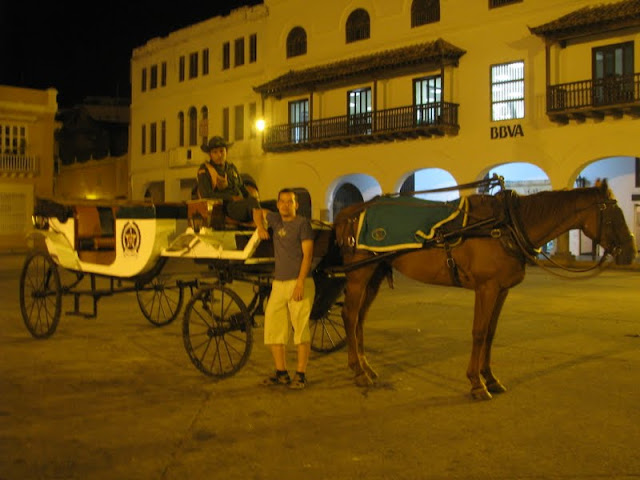 people's diet was based mostly on shellfish and fresh and salt-water fish.
people's diet was based mostly on shellfish and fresh and salt-water fish.
The development of the Sinú society in what is today the departments of Córdoba and Sucre, eclipsed these first developments around the Cartagena Bay area. Until the Spanish colonization, many cultures derived from the Karib, Malibu and Arawak language families lived along the Colombian Caribbean coast. In the late pre-Columbian era, the Sierra Nevada de Santa Marta was home to the Tayrona people, whose language was closely related to the Chibcha language family.
After the failed effort to found Antigua del Darién in 1506 by Alonso de Ojeda and the subsequent unsuccessful founding of San Sebastian de Urabá in 1517 by Diego de Nicuesa, the southern Caribbean coast became unattractive to colonizers, who preferred the better known Hispaniola and Cuba.
Though the Casa de Contratación gave permission to Rodrigo de Bastidas (1460–1527) to again conduct an expedition as adelantado to this area, Bastidas explored the coast and discovered the Magdalena River Delta in his first journey from Guajira to the south in 1527, a trip that ended in the Urabá Gulf, the location of the failed first settlements. De Nicuesa and De Ojeda noted the existence of a big bay on the way from Santo Domi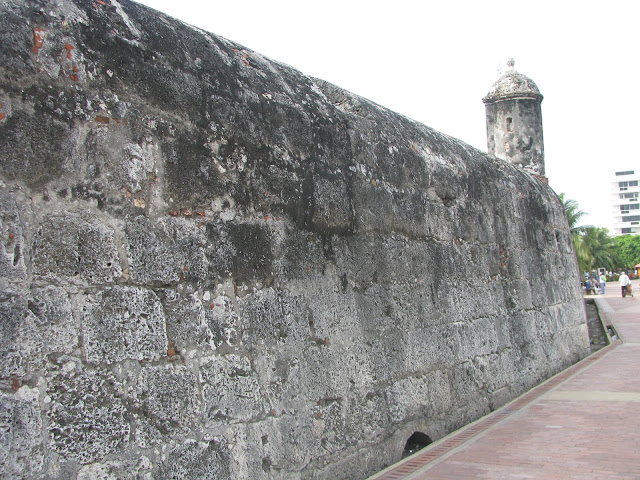 ngo to Urabá and the Panama isthmus, and that encouraged Bastidas to investigate.
ngo to Urabá and the Panama isthmus, and that encouraged Bastidas to investigate.
Cartagena was founded on 1 June 1533 by Spanish commander Pedro de Heredia, in the former location of the indigenous Caribbean Calamarí village. The town was named after Cartagena, Spain, where most of Heredia's sailors came from.
Initially, life in the city was bucolic, with fewer than 2000 inhabitants and only one church. The dramatically increasing fame and wealth of the prosperous city turned it into an attractive plunder site for pirates and corsairs – French privateers licensed by their king. Just 30 years after its founding, the city was pillaged by the French nobleman Jean-François Roberval. The city then set about strengthening its defences and surrounding itself with walled compounds and castles. Martin Cote, a Basque from Biscay, attacked years later. A few months after the disaster of the invasion of Cote, a fire destroyed the city and forced the creation of a firefighting squad, the first in the Americas.
Many pirates had plans to perpetrate similar schemes involving Cartagena, which became more and more interesting to them. In 1568, Sir John Hawkins of England tried to trick Gov. Martín d e las Alas to go against Spanish law and open a foreign fair in the city to sell goods, planning to ravage the port afterwards. The governor declined and Hawkins besieged the city but failed to reduce it.
e las Alas to go against Spanish law and open a foreign fair in the city to sell goods, planning to ravage the port afterwards. The governor declined and Hawkins besieged the city but failed to reduce it.
In 1586, Sir Francis Drake, also of England, and nephew of Hawkins, came with a strong fleet and quickly took the city. The governor, Pedro Fernández de Busto, fled with the Archbishop to the neighboring town of Turbaco, and from there negotiated the costly ransom for the city: 107,000 Spanish Eight Reales of the time, or around 200 million in today's US dollars. Drake had destroyed one-quarter of the city, the developing Palace of the Township, and the recently finished cathedral.
After this disaster, Spain poured millions every year into the city for its protection, beginning with Gov. Francisco de Murga's planning of the walls and forts; this practice was called "Situado". The magnitude of this subsidy is shown by comparison: between 1751 and 1810, the city received the sum of 20,912,677 Spanish reales, the equivalent of some 2 trillion dollars today.
The city recovered quickly from the takeover by Drake and kept growing, and continued to attract attention from its opponents. The Raid on Cartagena in 1697 by Sir Bernard Desjean, Baron de Pointis and Jean Baptiste Ducasse was an all-out invasion that was politically motivated. There being no male successor to the Spanish Habsburg throne, King Louis XIV wanted his grandson Felipe V to assert the right of succession, and the taking of Cartagena de Indias could help significantly.
kept growing, and continued to attract attention from its opponents. The Raid on Cartagena in 1697 by Sir Bernard Desjean, Baron de Pointis and Jean Baptiste Ducasse was an all-out invasion that was politically motivated. There being no male successor to the Spanish Habsburg throne, King Louis XIV wanted his grandson Felipe V to assert the right of succession, and the taking of Cartagena de Indias could help significantly.
The political purpose behind the invasion was somewhat undermined by Ducasse, the governor of Saint-Domingue – today's Haiti – who brought his soldiers with a plan to steal, but ended with pirates and thieves again destroying the city. Entry to the city was not easy because of the recently finished first stage of walls and forts, which slowed the invasion and made it costly. While Desjean only asked for 250,000 Spanish reales in ransom, Ducasse stayed a few months and dishonored the baron's promise to respect the churches and holy places, and left the inhabitants with nothing. The city had again lost everything.
During the 17th century, the Spanish Crown paid for the services of prominent European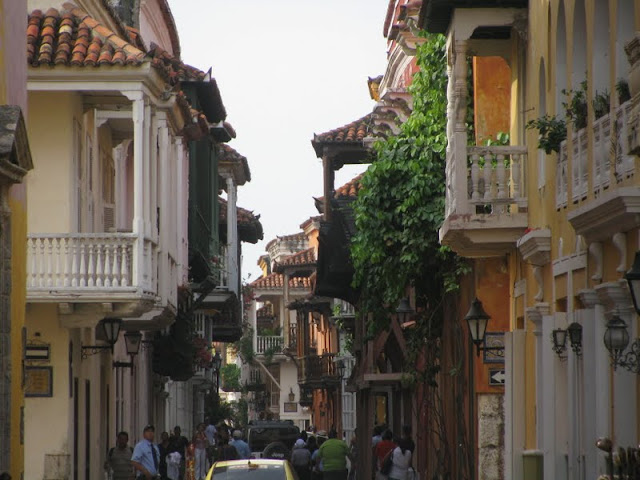 military engineers to carry out the construction of the fortresses which are today Cartagena's most significant identitifying features. Engineering works took well over 208 years and ended with some eleven kilometres of walls surrounding the city, including the Castillo San Felipe de Barajas, named in honor of Spain's King Philip IV. It was built during the governorship of Pedro Zapata de Mendoza, Marquis of Barajas and was constructed to repel land attacks, equipped with sentry boxes, buildings for food and weapons storage, and underground tunnels.
military engineers to carry out the construction of the fortresses which are today Cartagena's most significant identitifying features. Engineering works took well over 208 years and ended with some eleven kilometres of walls surrounding the city, including the Castillo San Felipe de Barajas, named in honor of Spain's King Philip IV. It was built during the governorship of Pedro Zapata de Mendoza, Marquis of Barajas and was constructed to repel land attacks, equipped with sentry boxes, buildings for food and weapons storage, and underground tunnels.
When the defenses were finished in 1756, the city was considered impregnable. Legend has it that Charles III of Spain, while reviewing in Madrid the Spanish defense expenditures for Havana and Cartagena de Indias, looked through his spyglass and remarked "This is outrageous! For this price those castles should be seen from here!"
Cartagena was a major trading port, especially for precious m etals. Gold and silver from the mines in the New Granada and Peru were loaded in Cartagena on the galleons bound for Spain via Havana. Cartagena was also a slave port; Cartagena and Veracruz, (Mexico), were the only cities authorized to trade with black people. The first slaves arrived with Pedro de Heredia and worked as cane cutters to open roads, in the desecration of tombs of the aboriginal population of Sinú, and in the construction of buildings and fortresses. The agents of the Portuguese company Cacheu distributed human 'cargoes' from Cartagena for mine exploitation in Venezuela, the West Indies, the Nuevo Reino de Granada and the Viceroyalty of Perú.
etals. Gold and silver from the mines in the New Granada and Peru were loaded in Cartagena on the galleons bound for Spain via Havana. Cartagena was also a slave port; Cartagena and Veracruz, (Mexico), were the only cities authorized to trade with black people. The first slaves arrived with Pedro de Heredia and worked as cane cutters to open roads, in the desecration of tombs of the aboriginal population of Sinú, and in the construction of buildings and fortresses. The agents of the Portuguese company Cacheu distributed human 'cargoes' from Cartagena for mine exploitation in Venezuela, the West Indies, the Nuevo Reino de Granada and the Viceroyalty of Perú.
On 5 February 1610, the Catholic Monarchs established from Spain the Inquisition Holy Office Court in Cartagena de Indias by a royal decree issued by King Philip II. It thus became, with Lima and Mexico one of the three seats of the Inquisition in the Americas. The Inquisition Palace, finished in 1770, still exists with its original features of colonial times. When Cartagena declared its complete independence from Spain on 11 November 1811 the inquisitors were urged to leave the city. The Inquisition operated again after the Reconquest in 1815, but it disappeared entirely when Spain surrendered six years later before the patriotic troops led by Simón Bolívar.
Lima and Mexico one of the three seats of the Inquisition in the Americas. The Inquisition Palace, finished in 1770, still exists with its original features of colonial times. When Cartagena declared its complete independence from Spain on 11 November 1811 the inquisitors were urged to leave the city. The Inquisition operated again after the Reconquest in 1815, but it disappeared entirely when Spain surrendered six years later before the patriotic troops led by Simón Bolívar.
Although the 18th century began very badly for the city, soon things began to improve. The pro-trade economic policies of the new dynasty in Madrid bolstered the economics of Cartagena de Indias, and the establishment of the Viceroyalty of the New Granada in 1717 placed the city in the position of being the greatest beneficiary of the colony.
The reconstruction after the Raid on Cartagena (1697) was initia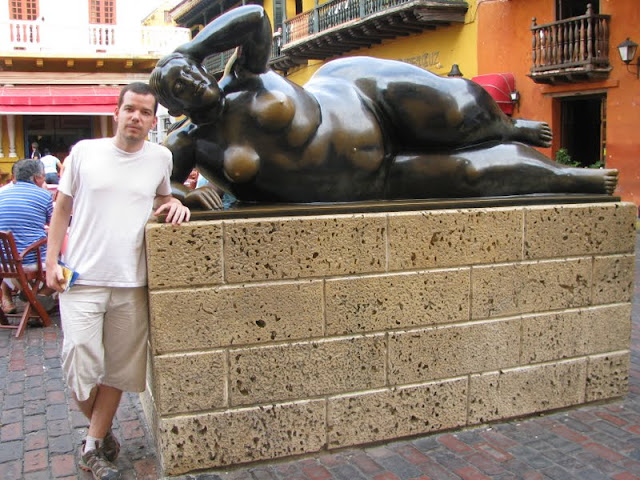 lly slow, but with the end of the War of the Spanish Succession around 1711 and the competent administration of Don Juan Díaz de Torrezar Pimienta, the walls were rebuilt, the forts reorganized and restored, and the public services and buildings reopened. By 1710, the city was fully recovered. At the same time, the slow but steady reforms of the restricted trade policies in the Spanish Empire encouraged the establishment of new trade houses and private projects. During the reign of Philip V of Spain the city had many new public works projects either begun or completed, among them the new fort of San Fernando, the Hospital of the Obra Pía and the full paving of all the streets and the opening of new roads.
lly slow, but with the end of the War of the Spanish Succession around 1711 and the competent administration of Don Juan Díaz de Torrezar Pimienta, the walls were rebuilt, the forts reorganized and restored, and the public services and buildings reopened. By 1710, the city was fully recovered. At the same time, the slow but steady reforms of the restricted trade policies in the Spanish Empire encouraged the establishment of new trade houses and private projects. During the reign of Philip V of Spain the city had many new public works projects either begun or completed, among them the new fort of San Fernando, the Hospital of the Obra Pía and the full paving of all the streets and the opening of new roads.
In March 1741, the city endured a large-scale a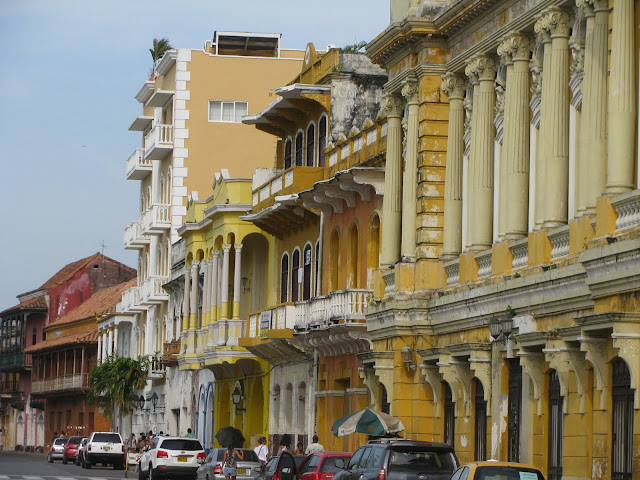 ttack by British and American colonial troops led by admiral Edward Vernon (1684–1757), who arrived at Cartagena with a massive fleet of 186 ships and 23,600 men, including 12,000 infantry, against only six Spanish ships and fewer than 6,000 men, in an action known as the Battle of Cartagena de Indias. The siege was broken off due to the start of the tropical rainy season, after weeks of intense fighting in which the British landing party was successfully repelled by the Spanish and native forces led by commander General Blas de Lezo y Olavarrieta (1689–1741, death in aftermath of the Cartagena battle), a Basque from the Gipuzkoa lands of Spain.
ttack by British and American colonial troops led by admiral Edward Vernon (1684–1757), who arrived at Cartagena with a massive fleet of 186 ships and 23,600 men, including 12,000 infantry, against only six Spanish ships and fewer than 6,000 men, in an action known as the Battle of Cartagena de Indias. The siege was broken off due to the start of the tropical rainy season, after weeks of intense fighting in which the British landing party was successfully repelled by the Spanish and native forces led by commander General Blas de Lezo y Olavarrieta (1689–1741, death in aftermath of the Cartagena battle), a Basque from the Gipuzkoa lands of Spain.
Heavy British casualties were compounded by diseases such as yellow fever. This victory prolonged Spain's control of the Caribbean waters, which helped s ecure its large Empire until the 19th century. Admiral Vernon was accompanied by American Colonial troops, including George Washington's brother, Lawrence Washington, who was so impressed with Vernon that he named his Mount Vernon estate and plantation after him.
ecure its large Empire until the 19th century. Admiral Vernon was accompanied by American Colonial troops, including George Washington's brother, Lawrence Washington, who was so impressed with Vernon that he named his Mount Vernon estate and plantation after him.
After Vernon began what is called the 'Silver Age' of the city (1750–1808). This time was one of permanent expansion of the existing buildings, massive immigration from all the other cities of the Viceroyalty, increase of the economic and political power of the city and a population growth spurt not equaled since that time. Political power that was already shifting from Bogotá to the coast completed its relocation, and the Viceroys decided to reside in Cartegena permanently. The inhabitants of the city were the richest of the colony, the aristocracy erected noble houses on their lands to form great estates, libraries and printing establishments were opened, and the first café in New Granada was even established. The good times of steady progress and advancement in the second half of the 18th century came to an abrupt end in 1808 with the general crisis of the Spanish Empire that came from the Mutiny of Aranjuez and all its consequences.
inhabitants of the city were the richest of the colony, the aristocracy erected noble houses on their lands to form great estates, libraries and printing establishments were opened, and the first café in New Granada was even established. The good times of steady progress and advancement in the second half of the 18th century came to an abrupt end in 1808 with the general crisis of the Spanish Empire that came from the Mutiny of Aranjuez and all its consequences.
For more than 275 years, Cartagena was under Spanish rule. On November 11, 1811, Cartagena declared its independence.
Islas del Rosario
Castillo de San Felipe
Typs:
Don't take the boat tour to the Islas del Rosario, you will waste 5 hours in the boat and you will be in the beach only for 2 hours. Better go by bus. There is a bridge.
Cartagena de Indias, is a large Caribbean beach resort city on the northern coast of Colombia in the Caribbean Coast Region of and capital of Bolívar Department. The city had a population of 892,545 as of the 2005 census making it the
Activity and development of the Cartagena region is dated back to 4000 B.C. around Cartagena Bay. The city itself was founded June 1, 1533 and named after Cartagena, Spain. Cartagena served a key role in the development of the region during the Spanish eras and secured a hold as a center of political and economic activity due to the presence of royalty and wealthy viceroys. In 1984, Cartagena's colonial walled city and fortress were designated a UNESCO World Heritage Site.
The Puerto Hormiga Culture, found in the Caribbean coast region, particularly in the area from the Sinú River Delta to the Cartagena de Indias Bay, appears to be the first documented human community in what is now Colombia. Archaeologists estimate that around 7000 BC, the f
Archaeological investigations date the decline of the Puerto Hormiga culture and its related settlements to around 3000 BC. The rise of a much more developed culture, the Monsú, who lived at the end of the Dique Canal near today's Cartagena neighborhoods Pasacaballos and Ciénaga Honda at the northernmost part of Barú Island, has been hypothesized. The Monsú culture appears to have inherited the Puerto Hormiga culture's use of the art of pottery and also to have developed a mixed economy of agriculture and basic manufacture. The Monsú
The development of the Sinú society in what is today the departments of Córdoba and Sucre, eclipsed these first developments around the Cartagena Bay area. Until the Spanish colonization, many cultures derived from the Karib, Malibu and Arawak language families lived along the Colombian Caribbean coast. In the late pre-Columbian era, the Sierra Nevada de Santa Marta was home to the Tayrona people, whose language was closely related to the Chibcha language family.
After the failed effort to found Antigua del Darién in 1506 by Alonso de Ojeda and the subsequent unsuccessful founding of San Sebastian de Urabá in 1517 by Diego de Nicuesa, the southern Caribbean coast became unattractive to colonizers, who preferred the better known Hispaniola and Cuba.
Though the Casa de Contratación gave permission to Rodrigo de Bastidas (1460–1527) to again conduct an expedition as adelantado to this area, Bastidas explored the coast and discovered the Magdalena River Delta in his first journey from Guajira to the south in 1527, a trip that ended in the Urabá Gulf, the location of the failed first settlements. De Nicuesa and De Ojeda noted the existence of a big bay on the way from Santo Domi
Cartagena was founded on 1 June 1533 by Spanish commander Pedro de Heredia, in the former location of the indigenous Caribbean Calamarí village. The town was named after Cartagena, Spain, where most of Heredia's sailors came from.
Initially, life in the city was bucolic, with fewer than 2000 inhabitants and only one church. The dramatically increasing fame and wealth of the prosperous city turned it into an attractive plunder site for pirates and corsairs – French privateers licensed by their king. Just 30 years after its founding, the city was pillaged by the French nobleman Jean-François Roberval. The city then set about strengthening its defences and surrounding itself with walled compounds and castles. Martin Cote, a Basque from Biscay, attacked years later. A few months after the disaster of the invasion of Cote, a fire destroyed the city and forced the creation of a firefighting squad, the first in the Americas.
Many pirates had plans to perpetrate similar schemes involving Cartagena, which became more and more interesting to them. In 1568, Sir John Hawkins of England tried to trick Gov. Martín d
In 1586, Sir Francis Drake, also of England, and nephew of Hawkins, came with a strong fleet and quickly took the city. The governor, Pedro Fernández de Busto, fled with the Archbishop to the neighboring town of Turbaco, and from there negotiated the costly ransom for the city: 107,000 Spanish Eight Reales of the time, or around 200 million in today's US dollars. Drake had destroyed one-quarter of the city, the developing Palace of the Township, and the recently finished cathedral.
After this disaster, Spain poured millions every year into the city for its protection, beginning with Gov. Francisco de Murga's planning of the walls and forts; this practice was called "Situado". The magnitude of this subsidy is shown by comparison: between 1751 and 1810, the city received the sum of 20,912,677 Spanish reales, the equivalent of some 2 trillion dollars today.
The city recovered quickly from the takeover by Drake and
The political purpose behind the invasion was somewhat undermined by Ducasse, the governor of Saint-Domingue – today's Haiti – who brought his soldiers with a plan to steal, but ended with pirates and thieves again destroying the city. Entry to the city was not easy because of the recently finished first stage of walls and forts, which slowed the invasion and made it costly. While Desjean only asked for 250,000 Spanish reales in ransom, Ducasse stayed a few months and dishonored the baron's promise to respect the churches and holy places, and left the inhabitants with nothing. The city had again lost everything.
During the 17th century, the Spanish Crown paid for the services of prominent European
When the defenses were finished in 1756, the city was considered impregnable. Legend has it that Charles III of Spain, while reviewing in Madrid the Spanish defense expenditures for Havana and Cartagena de Indias, looked through his spyglass and remarked "This is outrageous! For this price those castles should be seen from here!"
Cartagena was a major trading port, especially for precious m
On 5 February 1610, the Catholic Monarchs established from Spain the Inquisition Holy Office Court in Cartagena de Indias by a royal decree issued by King Philip II. It thus became, with
Although the 18th century began very badly for the city, soon things began to improve. The pro-trade economic policies of the new dynasty in Madrid bolstered the economics of Cartagena de Indias, and the establishment of the Viceroyalty of the New Granada in 1717 placed the city in the position of being the greatest beneficiary of the colony.
The reconstruction after the Raid on Cartagena (1697) was initia
In March 1741, the city endured a large-scale a
Heavy British casualties were compounded by diseases such as yellow fever. This victory prolonged Spain's control of the Caribbean waters, which helped s
After Vernon began what is called the 'Silver Age' of the city (1750–1808). This time was one of permanent expansion of the existing buildings, massive immigration from all the other cities of the Viceroyalty, increase of the economic and political power of the city and a population growth spurt not equaled since that time. Political power that was already shifting from Bogotá to the coast completed its relocation, and the Viceroys decided to reside in Cartegena permanently. The
For more than 275 years, Cartagena was under Spanish rule. On November 11, 1811, Cartagena declared its independence.
You have read this article with the title CARTAGENA DE INDIAS, COLOMBIA. You can bookmark this page URL http://oinsweden.blogspot.com/2011/05/cartagena-de-indias-colombia.html. Thanks!
Write by:
AN - Tuesday, May 17, 2011





.jpg)




Comments "CARTAGENA DE INDIAS, COLOMBIA"
Post a Comment